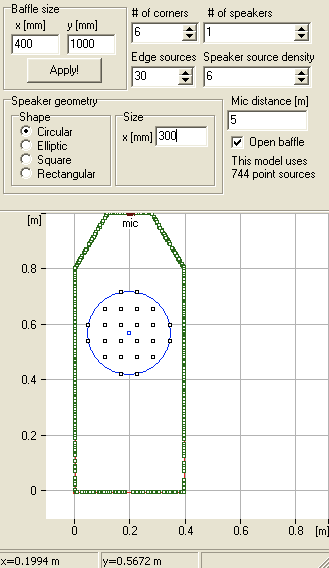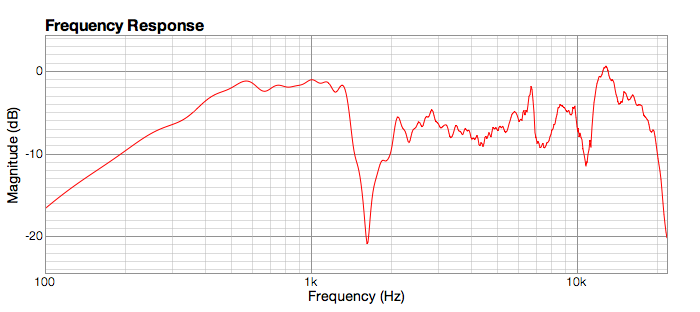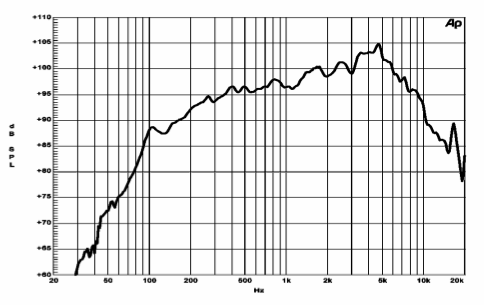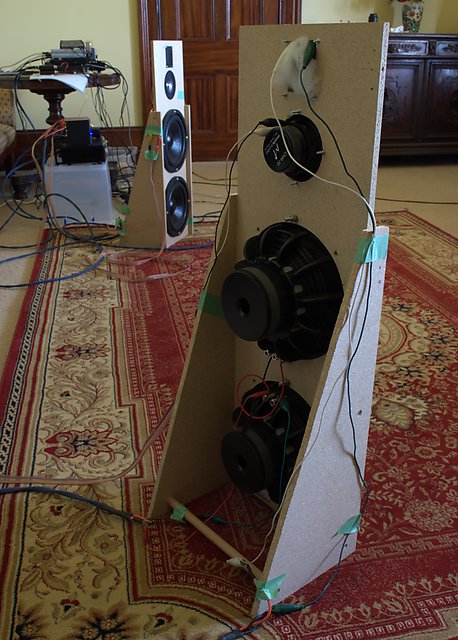
The baffle for the sensitive dipole
Since I now have some confidence that the Edge will give results that are consistent with measurements, I decided to actually “design” a baffle this time. It’s basically rectangular, 40cm wide and a meter tall, but with the top corners chopped off. The tweeter will sit just above the baffle in free air. Here’s the shape of the baffle and the positioning of the woofer: Here is the simulated response, with the microphone in the center of the baffle, at 1m height: The center of the woofer is 57 cm off the floor. (The interesting thing about that is that the “best” woofer height dependsRead More →



